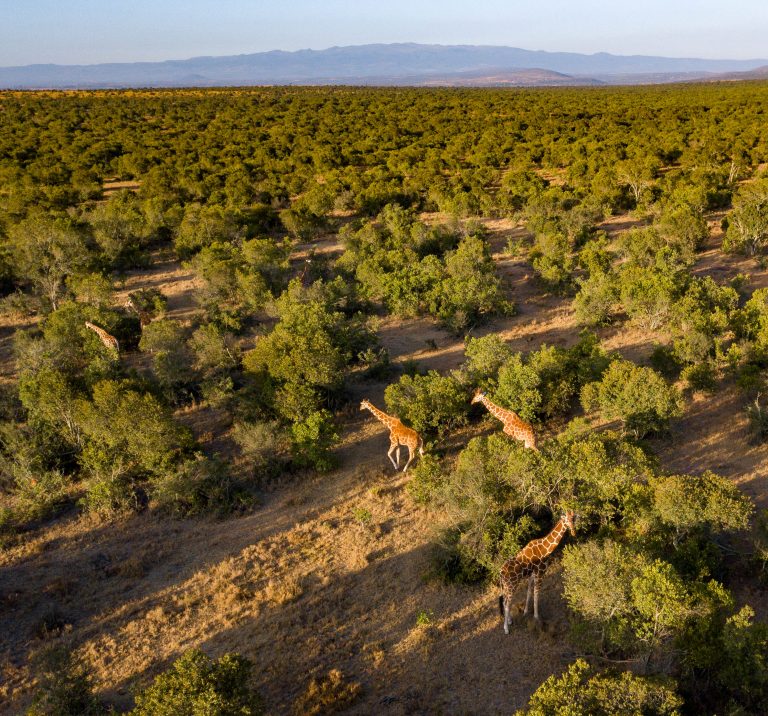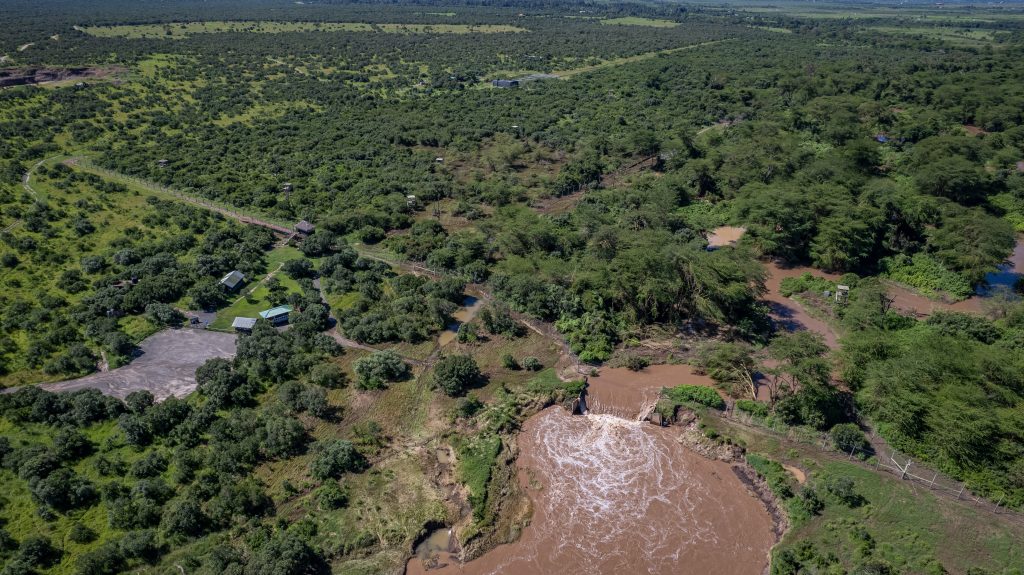Climate change
- Ol Pejeta conservancy
UNDERSTANDING CLIMATE CHANGE AND ITS IMPACT ON OL PEJETA
Climate change refers to long-term shifts in temperature and weather patterns, primarily due to human activities such as deforestation, land fragmentation due to infrastructure development, agriculture and overgrazing. These activities increase greenhouse gas emissions, trapping heat in the atmosphere and leading to global warming. The effects of climate change include rising temperatures, altered precipitation patterns, and an increase in extreme weather events, all of which significantly impact ecosystems and biodiversity.
Laikipia County, home to diverse wildlife conservancies including Ol Pejeta, is experiencing significant climate-related changes. As part of Kenya’s semi-arid region, Laikipia is highly vulnerable to rising temperatures, erratic rainfall, and prolonged droughts, all of which impact both wildlife and local communities.
In response, Ol Pejeta Conservancy is actively combating climate change through innovative and sustainable conservation practices. By protecting endangered species like the black rhino and the northern white rhino, the conservancy helps maintain healthy ecosystems that play a crucial role in carbon sequestration. Preserving large tracts of natural habitat and engaging in reforestation efforts enhances biodiversity and strengthens ecosystem resilience against climate-related stresses. These efforts not only safeguard wildlife but also contribute to stabilising local and regional climate patterns by promoting carbon storage in vegetation and soil.

CLIMATE CHANGE AT OL PEJETA

At Ol Pejeta Conservancy, climate change is manifesting in several ways, each posing a significant threat to wildlife and conservation efforts:
Extended Dry Spells – These refer to prolonged periods without rainfall, which lead to water shortages and a decline in pasture availability. Unlike high temperatures, which primarily influence heat stress and evaporation, extended dry spells disrupt seasonal rainfall patterns, making it harder for ecosystems to recover. As a result, wildlife and livestock are forced to migrate in search of resources, increasing human-wildlife conflict. In extreme cases, animals can succumb to severe starvation and opportunistic illnesses.
Way Forward: To combat the effects of extended dry spells, Ol Pejeta is enhancing water security through the construction of water reservoirs, boreholes, and rainwater harvesting systems. We implement planned rotational grazing to preserve soil health, improve grass species, and enhance pasture availability for both wildlife and livestock, and prevent land degradation. With this holistic pasture management approach, we monitor grass quantities and quality and intervene by withdrawing livestock from fields when levels are below thresholds and feeding them with stacked fodder. The fodder is also made available for wild animals in small enclosed recovery areas in times of need.
High Temperatures – Rising temperatures directly impact the ecosystem by increasing evaporation rates, reducing soil moisture, and causing heat stress in wildlife and livestock. These changes alter vegetation cover, making it harder for animals to find suitable forage and intensifying competition for grazing land. In 2022, extreme heat worsened drought conditions, drying up the Ewaso Nyiro River and leading to significant wildlife losses.
Way forward: To address rising temperatures, Ol Pejeta is implementing habitat restoration projects to improve vegetation cover. Water conservation initiatives, such as excavating artificial dams to ensure year-round water availability for both wildlife and livestock. Additionally, we aim to establish a weather station to monitor temperature trends and develop effective adaptive strategies.


Unpredictable Rainfall & Flooding – While drought poses a significant challenge in this semi-arid regions, heavy rains can just be destructive. Intense downpour often triggers flash floods that wash away topsoil, degrade grazing lands, destroy habitats, and damage infrastructure. In 2024, Ol Pejeta Conservancy experienced significant flash floods due to unprecedented heavy rains during the March-April-May season.
Way forward: To curb flooding, we have prioritized reforestation and wetland restoration to stabilize soils and reduce runoff. In 2024 alone, we planted over 15,000 trees to enhance watershed protection.
